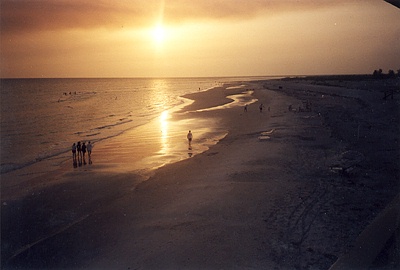All Nonfiction
- Bullying
- Books
- Academic
- Author Interviews
- Celebrity interviews
- College Articles
- College Essays
- Educator of the Year
- Heroes
- Interviews
- Memoir
- Personal Experience
- Sports
- Travel & Culture
All Opinions
- Bullying
- Current Events / Politics
- Discrimination
- Drugs / Alcohol / Smoking
- Entertainment / Celebrities
- Environment
- Love / Relationships
- Movies / Music / TV
- Pop Culture / Trends
- School / College
- Social Issues / Civics
- Spirituality / Religion
- Sports / Hobbies
All Hot Topics
- Bullying
- Community Service
- Environment
- Health
- Letters to the Editor
- Pride & Prejudice
- What Matters
- Back
Summer Guide
- Program Links
- Program Reviews
- Back
College Guide
- College Links
- College Reviews
- College Essays
- College Articles
- Back
Sunscreen and Our Health
What does sunscreen do?
Sunscreen helps prevent the sun’s ultraviolet (UV) radiation from reaching your skin. Two types of ultraviolet radiation, UVA and UVB, damage your skin, age it prematurely, and increase your risk of skin cancer.
Sun Protection Factor (SPF) is a measure of a sunscreen’s ability to prevent UVB from damaging the skin.
It works like this: If it takes 20 minutes for your unprotected skin to start turning red, using an SPF 15 sunscreen hypothetically prevents reddening 15 times longer, about five hours.
In percentages: SPF 15 filters out approximately 93 percent of all incoming UVB rays. SPF 30 keeps out 97 percent and SPF 50 keeps out 98 percent.
They may seem like insignificant differences, but if you are light sensitive, or have a history of skin cancer, those extra percentages will make a difference. And as you see, there is no sunscreen that can block all UV rays.
However, there are problems with the SPF model: First, no sunscreen, regardless of strength, should be expected to stay effective longer than two hours without reapplication. Second, “reddening” of the skin is a reaction to UVB rays alone and tells you little about what UVA damage you may be getting. Plenty of harm can be done without the red flag of sunburn being raised. (The Skin Cancer Foundation, 2013)
Who should wear sunscreen?
Anyone over the age of six months should use sunscreen daily. Even if you spend the day inside, you are exposed to ultraviolet radiation for brief periods throughout the day, especially if you are near windows, which generally filter out UVB but not UVA rays.
Babies under the age of six months should not be exposed to the sun, because their skin is highly sensitive to the chemical ingredients in sunscreen as well as to the sun’s rays. Shade and protective clothes are the best ways to protect them from the sun.
Why is sunscreen is vital in Quito?
According to the Hyperion Report from the Ecuadorian Civilian Space Agency, Ecuador, Peru, and Colombia receive the highest UV radiation on the planet. The report says the UV index in Quito is over 24. To put this in perspective, the World Health Organization (WHO) states the maximum tolerable level of UV radiation is 11 which is considered extreme. (Cowtan, 2013) Eyes should be taken care of too, by wearing sunglasses at all times while outdoors. There are sunglasses for specific sports, and sunglasses for everyday use. Make sure they hay UV protection on them.
Bibliography
The Skin Cancer Foundation (2013). Sunscreens Explained. Retrieved October 25, 2013 from: http://www.skincancer.org/prevention/sun-protection/sunscreen/sunscreens-explained
Cowtan, M. (2013). Avoiding Sunburn on Ecuador Beaches. Retreived on October 30, 2103 from: http://ecuadorbeaches.org/2013/03/avoiding-sunburn-on-ecuador-beaches/

Similar Articles
JOIN THE DISCUSSION
This article has 1 comment.
